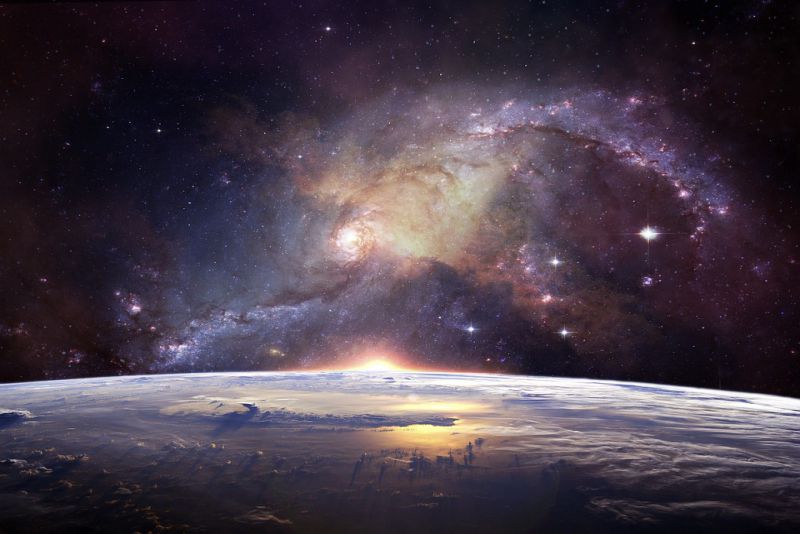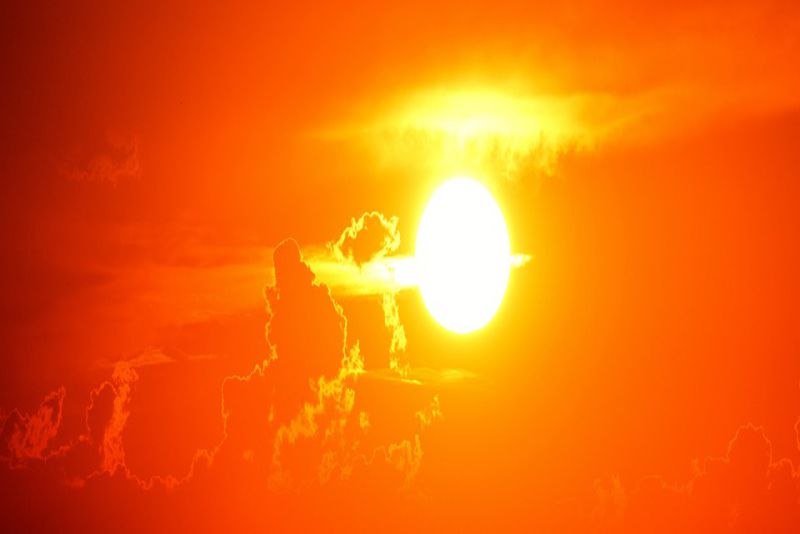The sun is an amazing object of God; we see it daily in our routine life. It provides us with light, and heat and comprises multiple gases. Have you ever thought about the amazing and interesting facts about the Sun? The Sun is the star at the central point of the Close planetary system. It is an almost ideal circle of hot plasma with an interior convective movement that produces an attractive field using a dynamo process. It is one of the most significant sources of strength to life on Earth and is also responsible for the diverse weather we experience in daily life. The sun is a yellow star that has the most interesting facts about Sun.
10: The Sun is the Solar System

The solar system is the gravitationally confined composition of the Sun and the matters surrounding it, either directly or indirectly. The eight planets include our Earth, the dwarf planets, and small Solar System bodies. We live on the Earth, so we believe it’s an equivalent individual of the solar system. In any case, that couldn’t possibly be more off-base. The mass of the Sun represents 99.8% of the mass of the nearby planetary group. Furthermore, the vast majority of that last 0.2% originates from Jupiter. So, the mass of the Earth is a small amount of the mass of the solar system. Truly, we scarcely exist here.
09: The Sun is huge, but looks tiny

One of the amazing and interesting facts about the Sun is that when we look from Earth it looks tiny from far away. But the reality is different, it has a diameter of 109 times bigger than the size of the Earth. You could adjust 1.3 million of Earth inside the Sun. That is so huge, however, there are a lot of greater stars out there. For instance, the greatest star that we are aware of would nearly arrive at Saturn if it was set inside the nearby planetary group.
08: How old the sun is?

The sun is about 4.6 billion years old It formed as a result of the collapse of part of a huge molecular cloud that comprised mostly of hydrogen and helium and that perhaps gave birth to many other stars. It is a massive ball of constantly burning gasses. It also comprises very small amounts of oxygen, carbon, iron, and neon gases. The sun exists in the middle of the Solar System. An interesting fact about the sun is that its age is estimated through computer models of development and nucleocosmochronology.
The Sun has existed in the chief sequence stage right now. It gradually consumes its hydrogen fuel. But at some stage after 5 billion years, the Sun will come in the red huge stage, where it swells up to use the inner planets – maybe including Earth. It will slough off its external layers, and then again shrink back to a moderately small white dwarf.
07: The Sun is constantly heating up, and will kill all life on Earth

We think that the sun is a part of the solar system and it will always be around us, providing its benefits, constantly, yet it is not right. it includes in not interesting facts about the Sun that it is warming up constantly and becoming almost 10% glowing every billion years. Indeed, inside only a billion years, the warmth from the Sun will be exceptional to such an extent that water won’t exist on the outside of the Earth. Life on Earth probably may be gone until the end of time.
Microorganisms may even now live on underground the Earth. However, the outside of the planet will be singed and uninhabited. It’ll take another seven billion years for the Sun to arrive at its red monster stage before it extends to the point that it will overcome and make destruction all over the Earth.
06: Different parts of the Sun rotate at different speeds

Contrasting from our Earth, the sun has formed from a huge ball of plasma and gas. Furthermore, it is not solid like the other 8 planets and the moon. Like all parts of Earth revolves around the axis at the same time. This means the north and south poles spin at the same time and same speed.
But the case of the sun is diverse, and it counts in interesting facts, it doesn’t rotate at an exact time or speed due to the presence of gas or plasma that rotate at diverse times or speeds depending upon where they are located on the sun. You can perceive how quickly the surface is spinning by following the development of sunspots over the surface. Districts at the equator take 25 days to finish one rotation, while features at the poles can take 36 days. Within the Sun, it appears to take around 27 days.
Read More: 10 interesting facts about the moon that you didn’t know
05: Spacecraft are observing the Sun right now

You know through new technologies, humans can observe the Sun from the Solar and Heliospheric Observatory, built by NASA and ESA. SOHO has been observing the Sun nonstop since 1995 and sent back innumerable images. Now The mission that, working now is NASA’s STEREO spacecraft. Two spacecraft, that launched in October 2006. These twin spacecraft were designed to watch the same activity on the Sun from the two diverse vantage points and provide a 3-D view of the Sun’s activity and enable astronomers to better predict the conditions of weather from space. Spacecrafts are observing the activity of the Sun, reckons in amazing and interesting facts.
04: 1 million Earths could fit inside the Sun

An interesting fact about the sun is that an empty Sun would fit around 960,000 circular Earth. Whenever crunched inside with no squandered space, at that point around 1,300,000 would fit inside. The Sun’s surface region is multiple times that of the Earth’s.
03: How hot is the Sun?

Energy is generated at the Sun’s core through nuclear fusion. That’s why hydrogen converts into Helium. Gravity causes powerful pressure, and temperatures expand up to 27 million degrees Fahrenheit. That energy then radiates apparent in the sun’s internal radiative zone, which lacks the heat and pressure that is a reason for fusion. In that zone, temperatures drop from 12.6-3.6 million Fahrenheit. In the subsequent zone, termed the convective zone, plasma foams transmit heat to the surface. This zone crosses about 3.6 million F.
02: The Sun’s light takes just eight minutes to reach Earth

Interesting and amazing facts about the sun are that the light the sun provides to us can reach us just in 8 minutes. The Sun has an average distance of 150 million kilometers from the Earth. Light takes in traveling almost 300,000 kilometers per second. It dividing one by the other gives us an estimated time of 500 seconds. Though this energy reaches Earth in just a few minutes, it will already have taken millions of years to travel from the Sun’s core to the surface of the Earth.
01: Sun’s strong magnetic field

Another interesting fact about the sun is that it has a very strong magnetic field. The magnetic energy released through the Sun during magnetic storms causes solar flares. We see these as sunspots. In sunspots, the magnetic lines curve and they turn, much like a tornado would on Earth.

